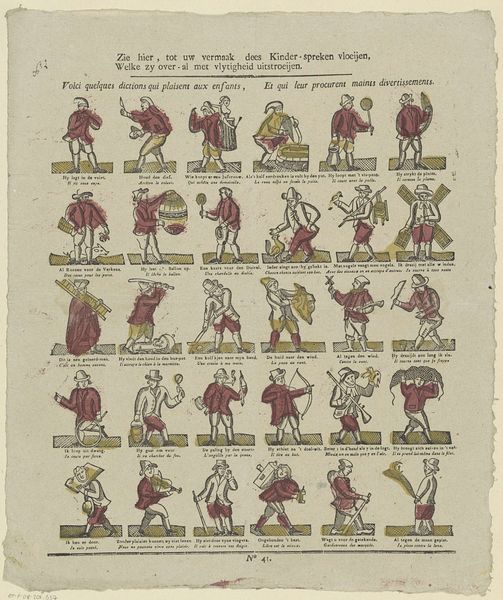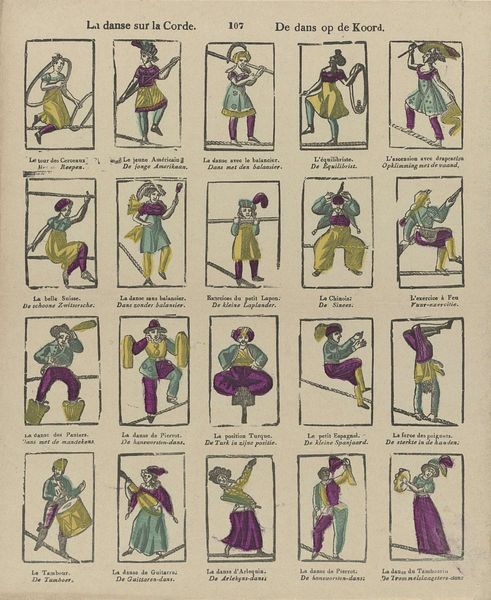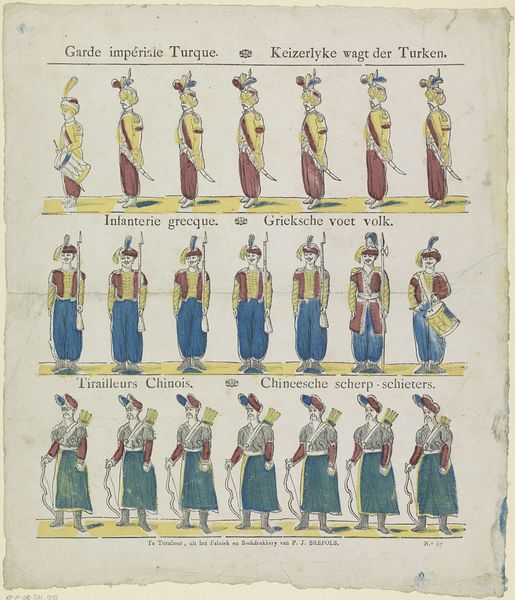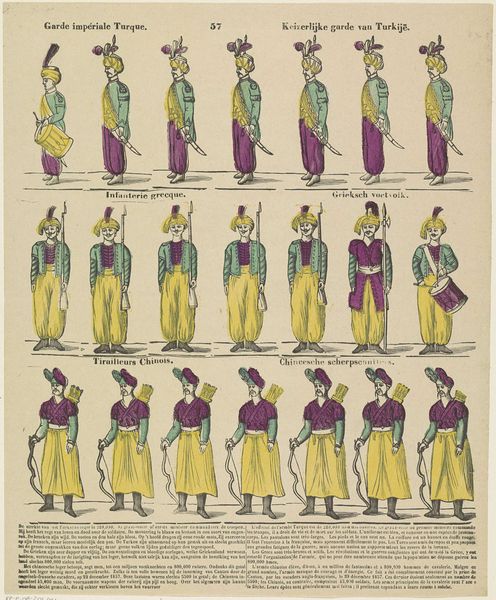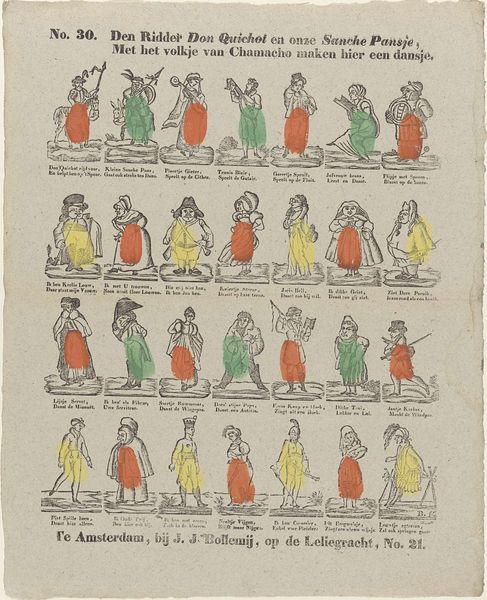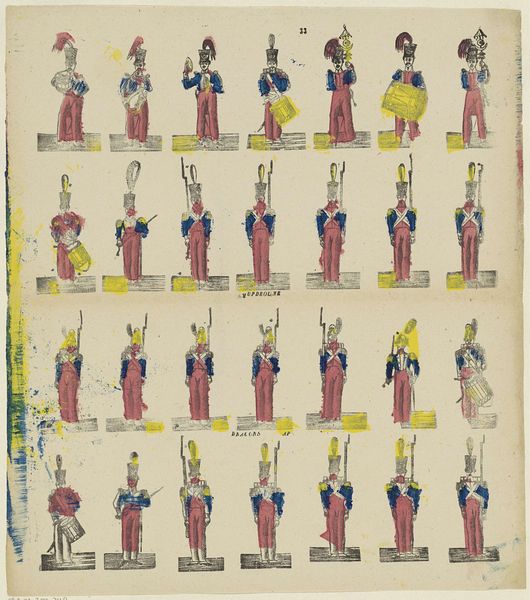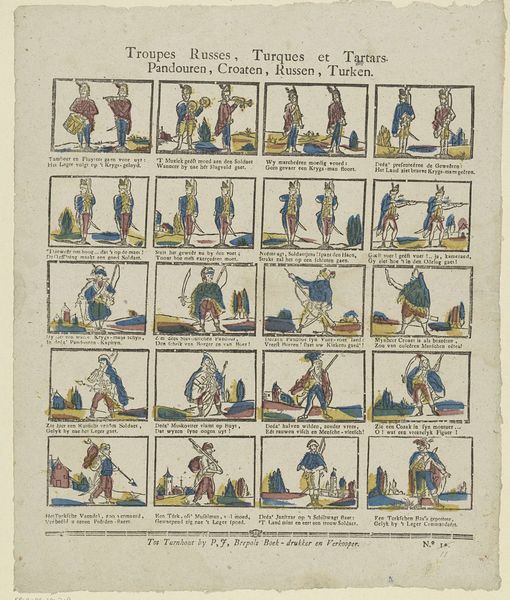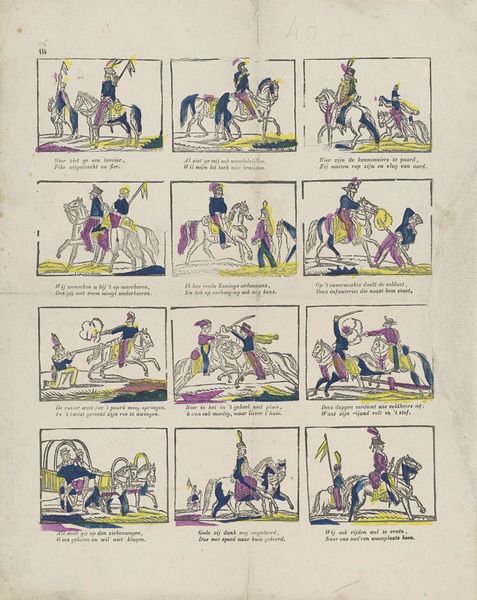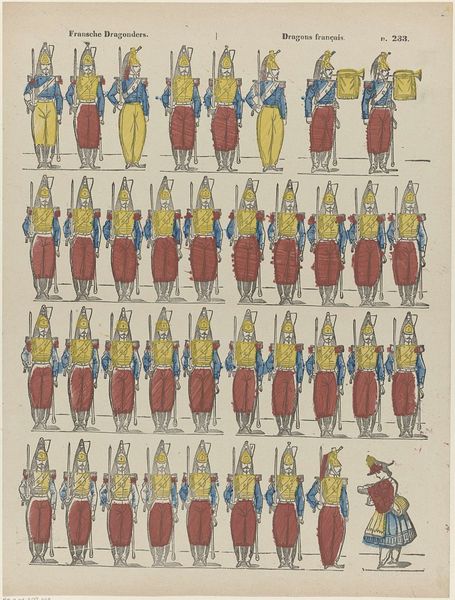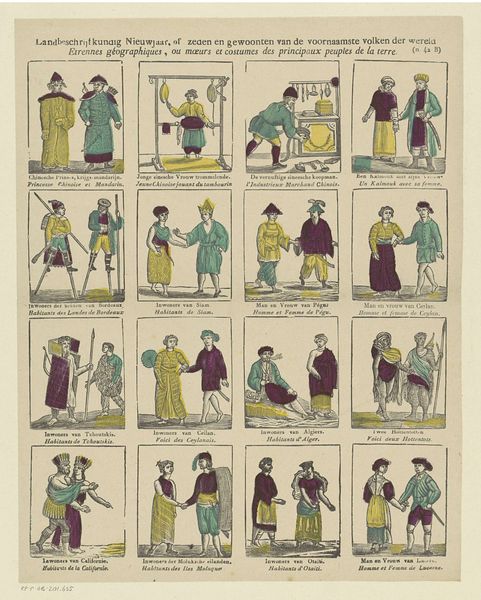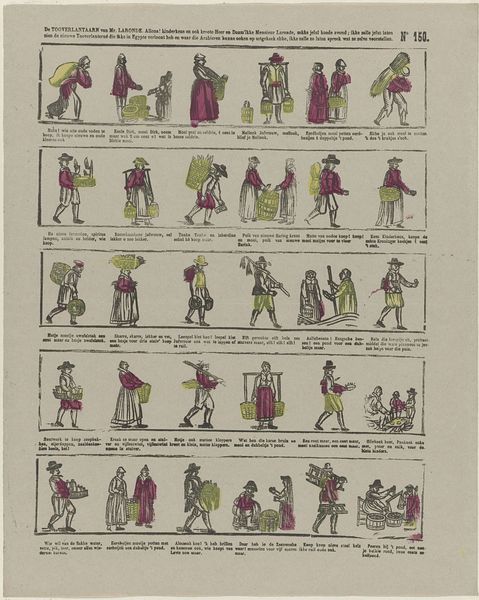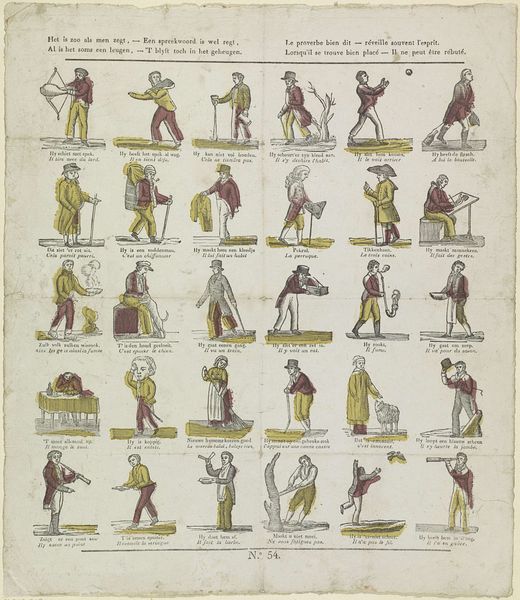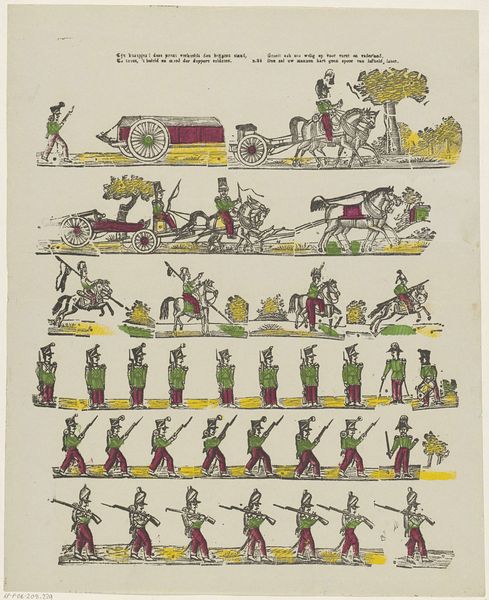
Zouaven (Fransche troepen van Afrika) / Zouaves (troupes françaises d'Afrique) / Afrikaansche infanterie op vier gelederen / Infanterie Arabe sur quatre rangs 1800 - 1833
0:00
0:00
print, etching
# print
#
etching
#
history-painting
Dimensions: height 429 mm, width 336 mm
Copyright: Rijks Museum: Open Domain
Curator: Welcome. We’re standing before a print titled "Zouaven (Fransche troepen van Afrika) / Zouaves (troupes françaises d'Afrique) / Afrikaansche infanterie op vier gelederen / Infanterie Arabe sur quatre rangs" by Philippus Jacobus Brepols, dating between 1800 and 1833. It’s currently held in the Rijksmuseum’s collection. Editor: My immediate impression is a strangely appealing, yet unsettling, regimented presentation of… what are they? Soldiers? The colour palette is so vibrant, but their stances, even in action, feel stiff. Curator: Precisely, these are depictions of Zouaves, light infantry regiments of the French army, originally North African soldiers, and later, primarily French. Consider the colonial context— the image portrays power structures, specifically the visual representation of French colonial power in Africa. Editor: So this print becomes part of that power dynamic. It's interesting how Brepols has laid out the etching. Look closely, the composition itself seems very manufactured – emphasizing repetitive poses that speak to a systematized military structure through careful image production, a means of ideological production even. Curator: Exactly! And consider that the artist is making decisions about the representation of the colonised, in a way appropriating imagery. The very medium of print made it readily accessible and widely distributed to the Dutch population. This increased not only understanding but shaped perception. Editor: Absolutely, and from a materials perspective, this print utilizes etching—a process involving acid to cut into the metal plate. The layering of printed colours adds a dimension. Each element speaks to labor – the manual printing, the distribution of images shaping understanding of colonial territories through repeated reproduction. Curator: The different poses and drills visualized would have been a kind of window onto a world that few Dutch citizens would ever have had access to. It provided information while reinforcing the state-driven narrative. Editor: Seeing this array of men visually codified tells a compelling story. By delving into material choices and understanding colonial networks this piece offers up important questions. Curator: It certainly does. Art becomes a form of active, not neutral, social engagement when the imagery serves purposes within established systems of authority and governance. Editor: Yes, and looking closely at the physical qualities—the etched line, the layering, the sheer labor behind production, highlights printmaking itself as part of how colonialism’s grip took hold. Curator: Hopefully we’ve illuminated both the context and the medium through which these Zouaves, and the narratives around them, came into being.
Comments
No comments
Be the first to comment and join the conversation on the ultimate creative platform.
